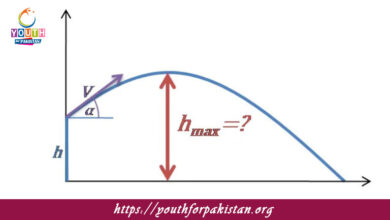Waves MDCAT MCQs with Answers

Welcome to the Waves MDCAT MCQs with Answers. In this post, we have shared Waves Multiple Choice Questions and Answers for PMC MDCAT 2024. Each question in MDCAT Physics offers a chance to enhance your knowledge regarding Waves MCQs in this MDCAT Online Test.
Waves MDCAT MCQs Test Preparations
What is the basic unit of a wave?
a) Amplitude
b) Wavelength
c) Frequency
d) Wavefront
The distance between two consecutive crests of a wave is called:
a) Frequency
b) Wavelength
c) Amplitude
d) Wave speed
Which type of wave requires a medium to travel?
a) Electromagnetic waves
b) Light waves
c) Sound waves
d) X-rays
The number of complete waves passing a point in one second is called:
a) Wavelength
b) Amplitude
c) Frequency
d) Wave speed
If the frequency of a wave is doubled, what happens to the wavelength?
a) It doubles
b) It halves
c) It stays the same
d) It quadruples
What is the speed of a wave if its frequency is 10 Hz and its wavelength is 5 m?
a) 50 m/s
b) 5 m/s
c) 10 m/s
d) 2 m/s
The highest point of a transverse wave is called:
a) Trough
b) Crest
c) Compression
d) Rarefaction
In which type of wave do particles of the medium move perpendicular to the direction of wave propagation?
a) Longitudinal waves
b) Mechanical waves
c) Transverse waves
d) Surface waves
In a longitudinal wave, the regions where the particles are closest together are called:
a) Troughs
b) Crests
c) Compressors
d) Compressions
The phenomenon where two waves interfere to form a wave with a larger amplitude is called:
a) Destructive interference
b) Constructive interference
c) Diffraction
d) Refraction
The property of a wave that determines its pitch is:
a) Amplitude
b) Frequency
c) Wavelength
d) Speed
Which of the following is an example of a transverse wave?
a) Sound wave
b) Water wave
c) Seismic P-wave
d) Ultraviolet wave
The bending of waves around obstacles and openings is known as:
a) Reflection
b) Diffraction
c) Refraction
d) Dispersion
When a wave passes from one medium to another, its:
a) Speed remains constant
b) Frequency changes
c) Wavelength changes
d) Amplitude remains constant
The angle of incidence is equal to the angle of reflection according to:
a) Snell’s Law
b) Huygens Principle
c) Law of Reflection
d) Law of Refraction
The amount of energy a wave carries per unit area is called:
a) Intensity
b) Amplitude
c) Frequency
d) Wavelength
The phenomenon where a wave changes direction as it enters a different medium is known as:
a) Reflection
b) Refraction
c) Diffraction
d) Dispersion
In which type of wave do particles of the medium move parallel to the direction of wave propagation?
a) Transverse waves
b) Longitudinal waves
c) Surface waves
d) Electromagnetic waves
What is the unit of frequency?
a) Meter
b) Second
c) Hertz
d) Newton
The phenomenon where a wave changes its speed and direction upon passing through different mediums is called:
a) Reflection
b) Diffraction
c) Refraction
d) Absorption
The lowest point of a transverse wave is known as:
a) Crest
b) Compression
c) Rarefaction
d) Trough
A wave with a frequency of 20 Hz and a wavelength of 0.5 m will have a speed of:
a) 10 m/s
b) 20 m/s
c) 30 m/s
d) 40 m/s
The principle stating that every point on a wavefront may be considered a source of secondary wavelets is known as:
a) Snell’s Law
b) Huygens’ Principle
c) Newton’s Law
d) Archimedes’ Principle
The wave property that describes the distance from the equilibrium position to the crest or trough is:
a) Frequency
b) Wavelength
c) Amplitude
d) Speed
The change in direction of a wave when it encounters a barrier or an edge is known as:
a) Reflection
b) Diffraction
c) Refraction
d) Interference
The frequency of a wave is measured in:
a) Meters
b) Seconds
c) Hertz
d) Newtons
The relationship between wave speed, frequency, and wavelength is given by:
a) v = λ * f
b) v = λ / f
c) v = f / λ
d) v = λ + f
In which type of wave does energy propagate through compressions and rarefactions?
a) Transverse waves
b) Electromagnetic waves
c) Longitudinal waves
d) Surface waves
The wave phenomenon responsible for the colors of a rainbow is:
a) Refraction
b) Reflection
c) Diffraction
d) Absorption
A wave travels through a medium at a speed of 20 m/s. If its frequency is 4 Hz, what is its wavelength?
a) 5 m
b) 10 m
c) 20 m
d) 40 m
The process by which a wave is bounced back after hitting a surface is called:
a) Diffraction
b) Reflection
c) Refraction
d) Absorption
The phenomenon where two waves combine to form a wave of smaller amplitude is called:
a) Constructive interference
b) Destructive interference
c) Diffraction
d) Reflection
When a wave passes from air into water, what happens to its frequency?
a) It increases
b) It decreases
c) It remains the same
d) It disappears
The maximum distance that particles in a wave move from their rest position is called:
a) Frequency
b) Wavelength
c) Amplitude
d) Speed
The speed of sound in air is approximately:
a) 150 m/s
b) 300 m/s
c) 340 m/s
d) 500 m/s
The bending of a wave around an obstacle or through an opening is known as:
a) Reflection
b) Refraction
c) Diffraction
d) Dispersion
Which wave phenomenon causes a straw in a glass of water to appear bent?
a) Reflection
b) Refraction
c) Diffraction
d) Interference
The change in direction of a wave due to a change in medium is known as:
a) Reflection
b) Diffraction
c) Refraction
d) Absorption
The principle stating that the incident wave, reflected wave, and transmitted wave all lie in the same plane is known as:
a) Law of Reflection
b) Huygens’ Principle
c) Snell’s Law
d) Fermat’s Principle
The speed of electromagnetic waves in a vacuum is approximately:
a) 3 x 10^6 m/s
b) 3 x 10^8 m/s
c) 3 x 10^10 m/s
d) 3 x 10^12 m/s
If you are interested to enhance your knowledge regarding Physics, Chemistry, Computer, and Biology please click on the link of each category, you will be redirected to dedicated website for each category.





